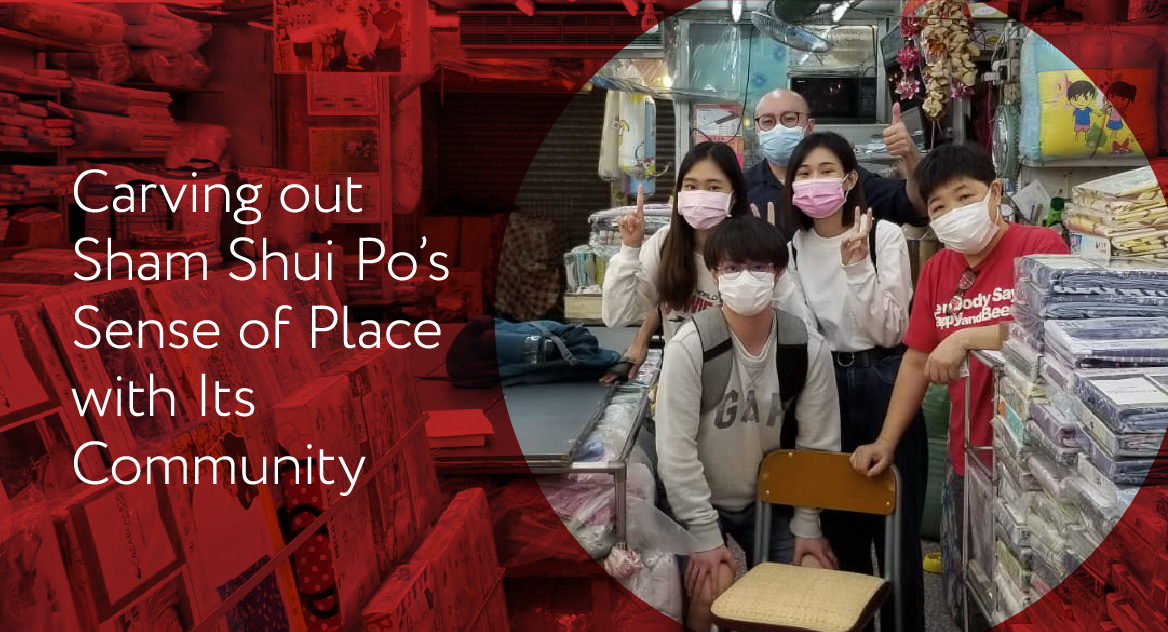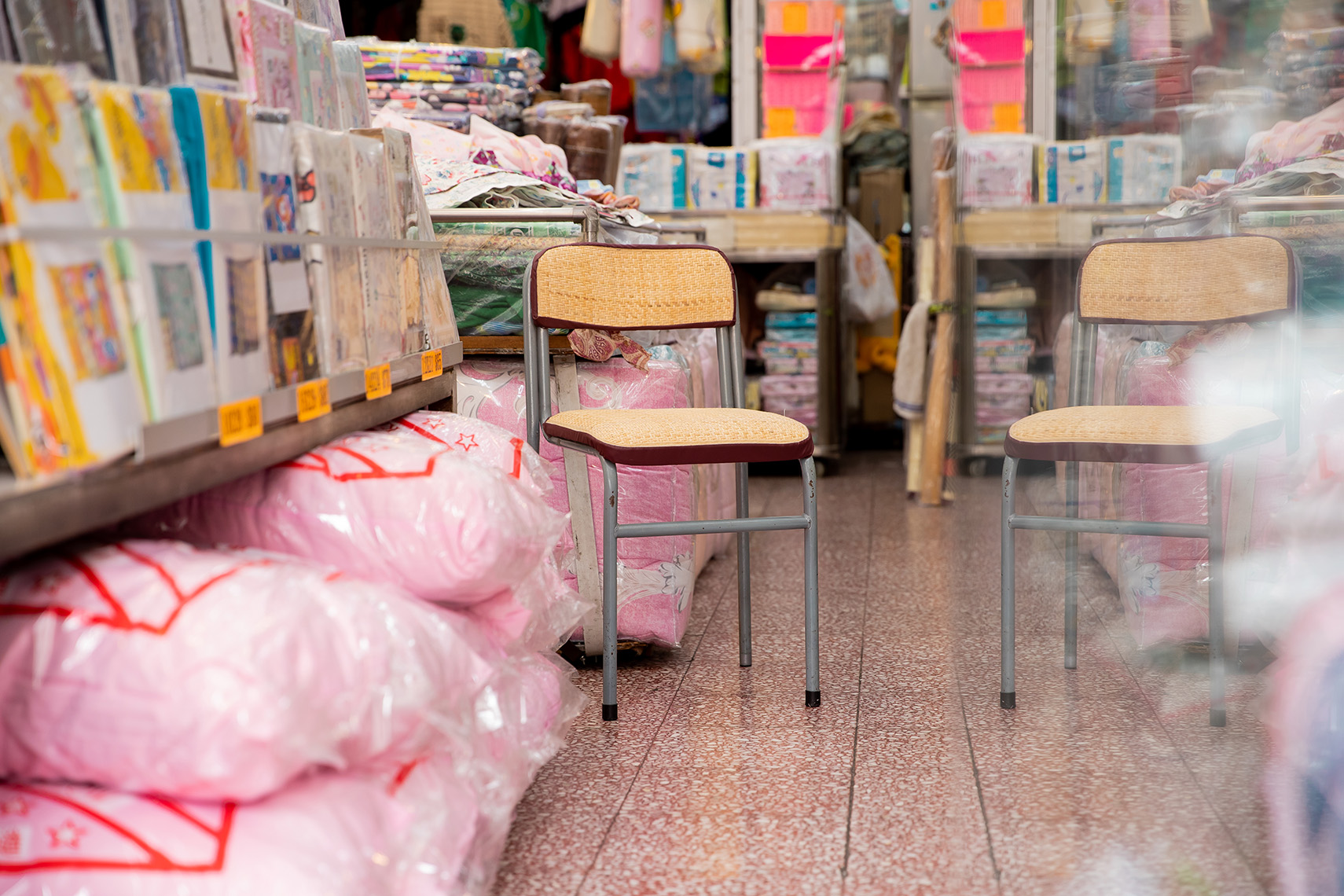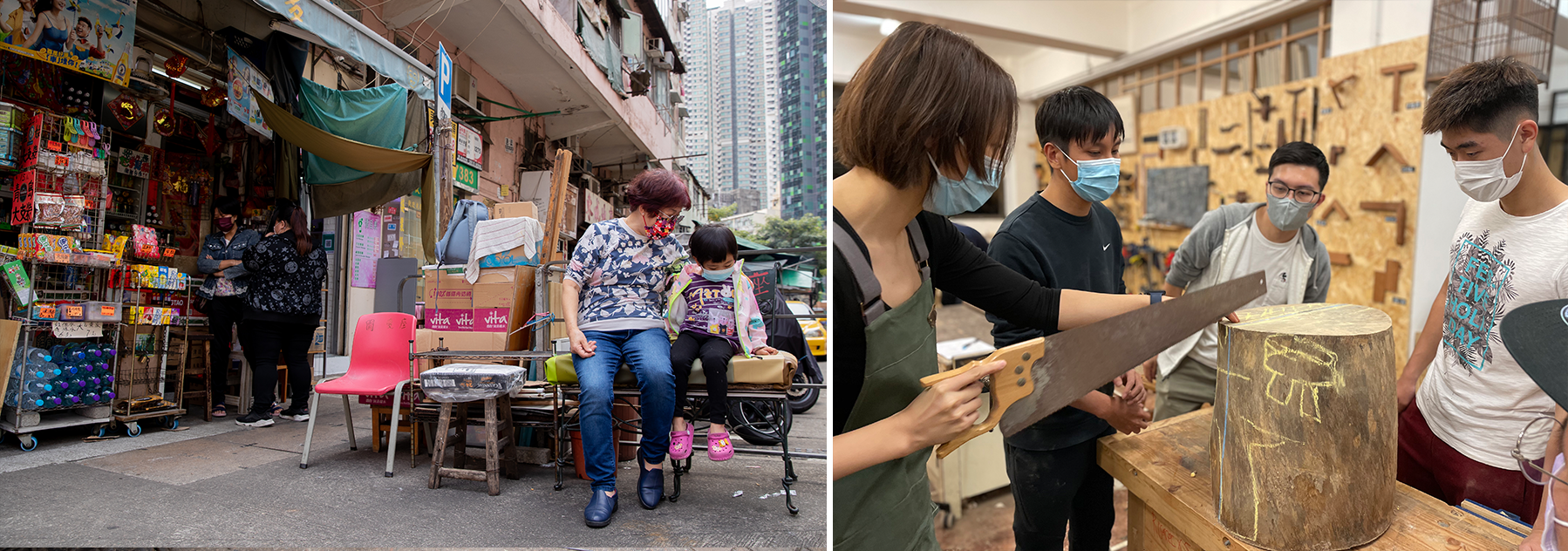DMatters March 2021 Issue

One of the many epiphanies brought about by the global pandemic is how vital public life and places are to our well-being. With social distancing measures in place, previously mundane public spaces, from ball courts to pocket parks, have become where we crave to go. It reveals our bond with these places – our 'sense of place' as referred to in urban design and placemaking. It was born of our individual experiences in and with places which define their intangible values – their cultures, identities and meanings.
Sham Shui Po, colloquially known as SSP, has recently climbed to the top three of the world's coolest and friendliest neighbourhoods. You would not find it surprising if you have noticed the district's evolution into an exciting hotchpotch of traditional and young businesses and cultures in recent years. Its growing diversity attracts people with different needs and purposes to visit or even move there. Together with those who have taken root there for years, they form the foundation of the neighbourhood's sense of place and social network.
With the theme 'SSP_People' the latest programmes of our creative tourism project Design District Hong Kong #ddHK aim to transform what is often unseen but deeply rooted in SSP into a journey for the senses, highlighting its cultural diversity, history, design and everyday life. One of the programmes, #ppl_upcycle_dd, sees a group of young people from Hong Kong YWCA's '10 Stories 100 Pieces' and Christian Concern for the Homeless Association working with 10 local shops to co-create bespoke furniture with an informal design approach.
"We can easily spot informal design in SSP because it is very efficient in solving everyday problems. For #ppl_upcycle_dd, the team of youngsters, most of them are not formally trained in design, put this intuitive design mindset to work. They dug deep into the needs of the users (the shop owners), invented new ways of using found objects, and made upcycled furniture pieces to fulfil their needs," said the project's Guest Curator Michael Leung.
We can easily spot informal design in SSP because it is very efficient in solving everyday problems.
 Alri Star's movable seating set
Alri Star's movable seating set
The participating shops vary in their nature and needs. Some of them are not solely commercial establishments but also the community’s social hubs where seating is instrumental in creating a welcoming vibe. The young team salvaged old bicycle parts and wooden panels with leather maker Alri Star to make a movable seating set that can be conveniently rolled inside when the shop is closed. In Yen Chow Street Hawker Bazaar, aka Pang Jai, the team observed the retailers' habit of hanging out at its mahjong corner and made a stool for it using timbers from trees blown down by typhoon Mangkhut. They also reupholstered the broken chairs outside Wing Fat, a corner store, with fabric samples so that the shop's owner and neighbours can now chill and chit-chat sitting on comfy padded seats.
 The timber stool at Yen Chow Street Hawker Bazaar (left) | Reupholstered chairs outside Wing Fat (right)
The timber stool at Yen Chow Street Hawker Bazaar (left) | Reupholstered chairs outside Wing Fat (right)
SSP is where you can easily happen on long-standing family businesses, some of which preserve precious traditional crafts. Hip Yee Hing is one of Hong Kong's last traditional bedding shops, and its second-generation owner Sei Yee is continuing the family's silk-cotton quilt-making and rattan mat-weaving skills. The team learnt rattan mat-upholstering from her and breathed new life into an abandoned school chair. 'Umbrella King' Yau Yiu-wai, the fifth generation of the famous umbrella seller and repairer Sun Nga Shing, is known for his love of gardening and DIY. The team jammed with him and made some movable planters using recycled water cooler bottles to display his beloved plants.
 The upcycled school chair with rattan mat-upholstering at Hip Yee Hing
The upcycled school chair with rattan mat-upholstering at Hip Yee Hing
Some #ppl_upcycle_dd furniture pieces were conceptualised to meet the shops' specific business needs. The team co-made a wheeled object for Kung Chan Cycle to facilitate bicycle maintenance, tool storage and social interaction. For Wah Ngai, the birthplace of the uniquely Hong Kong red-white-blue canvas bags, they upgraded a shelving unit for showcasing their range of products. Other furniture pieces include a sample display board for Wah Hing Accessories, a market stall offering an overwhelming variety of items; a movable second-hand cameras display box for Sunrise Photo Company, one of the few remaining photo developers in town; and a wheeled bookcase upcycled from used wooden crates for My Book Room, a community bookshop whose book collection is growing fast.
 Kung Chan Cycle (left) and Wah Hing Accessories (right)
Kung Chan Cycle (left) and Wah Hing Accessories (right)
"#ppl_upcycle_dd is not just about the physical outcomes but the co-creation processes. The team's communications and collaborations with the locals deeply connected them to SSP. Through taking a tour and witnessing these furniture pieces, we hope visitors will find out more about the neighbourhood's sense of place from the community," said Michael.
 Kung Chan Cycle's new wheeled object for bicycle maintenance
Kung Chan Cycle's new wheeled object for bicycle maintenance
In addition, SSP_People presents a range of design installations to transform 4 public spaces in Sham Shui Po into urban living rooms. Like #ppl_upcycle_dd, many of them were co-creations among designers, artists and the community. "Community engagement is crucial in placemaking projects. Those in the community know best what they need, whether they are running a shop, a school, a non-profit or simply live there," said Sam Lam, #ddHK's Chief Curator and Project Director.
"On top of being a creative tourism project, #ddHK is also about placemaking. It is the first of its kind in Hong Kong that encapsulates creative placemaking, tourism, heritage, innovation and culture to help tourists and the public to discover a different Hong Kong,” said Sam. “A place that attracts tourists must be one that the community loves. That's why we engaged the community to find out what works best in SSP. We hope to reconnect people with local neighbourhoods and bring new life to ordinary public facilities and underused spaces," she added.
A place that attracts tourists must be one that the community loves. That’s why we engaged the community to find out what works best in SSP.
 Chit-chat area outside Wing Fat (left) and fallen tree being upcycled into a timber stool (right)
Chit-chat area outside Wing Fat (left) and fallen tree being upcycled into a timber stool (right)
Can't wait to hang out in SSP's urban living rooms and see the community-made furniture for yourself? Visit SSP_People now and follow #ddHK's Facebook page and Instagram for the latest news!
In this issue, we will feast our eyes on a host of creative and glamourous fashion pieces from the online concert series EarUp Music Gig On and Fashion Asia Hong Kong's 10 Asian Designers to Watch 2020. Next, we will find out more about the commissioned work featured in Design Spectrum's PLAY LIVES exhibition. Last but not least, we can learn how to boost our productivity and business thinking with the insights from the Institute of Design Knowledge's recent New Normal GURU Design Thinking Online Workshops.
Click here to read the full issue of DMatters March 2021.
Further readings
Meow Shui Po: #ddHK's special production featuring Sham Shui Po's shop cats
https://youtu.be/4Cx152r5tyY
Sense of place
https://www.thenatureofcities.com/2016/05/26/sense-of-place/
How has public space changed in 2020
https://www.archdaily.com/953517/how-has-public-space-changed-in-2020